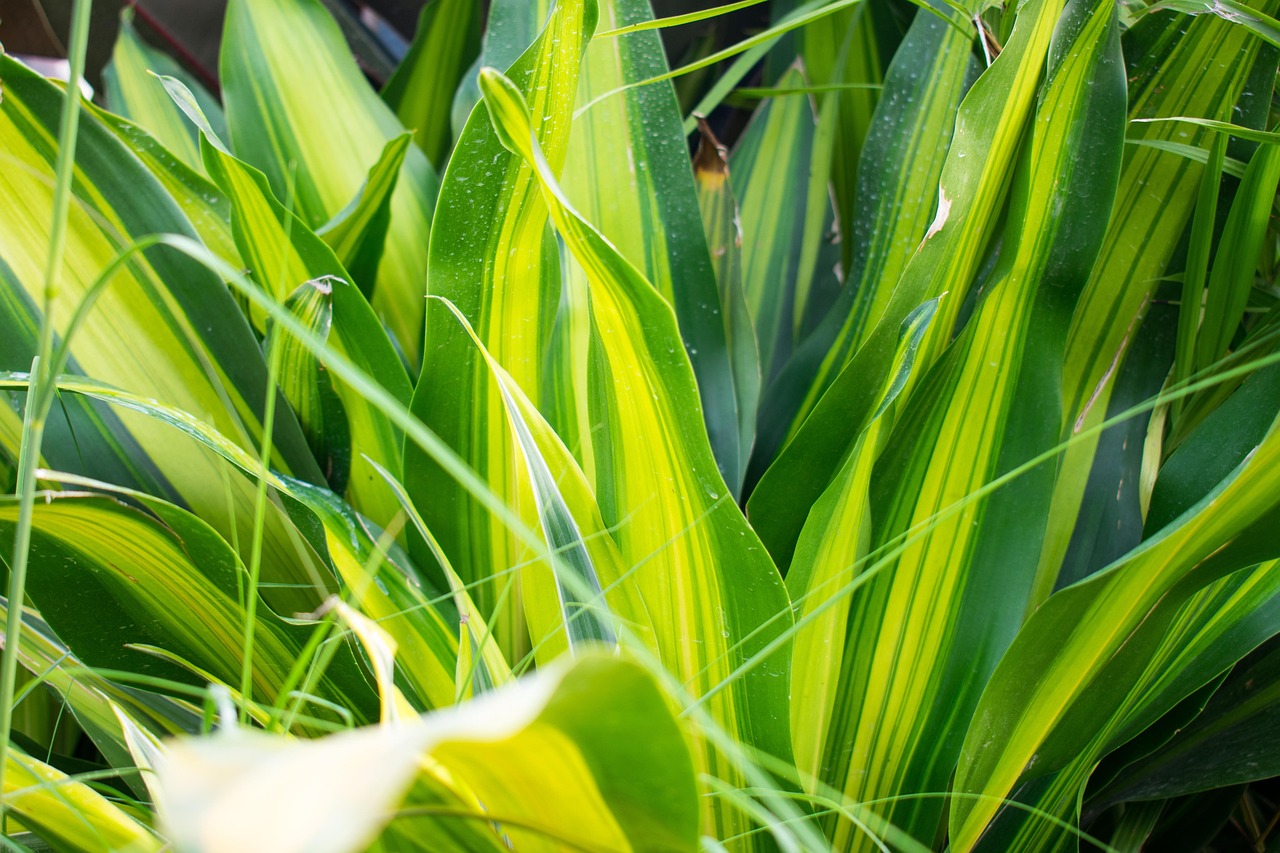Dracaena plants are a diverse group of striking houseplants that can elevate any indoor space. With various species offering unique foliage and growth habits, many enthusiasts may be unaware of the stunning variety they can choose from. This article will explore the enchanting world of Dracaena.
Originating from tropical regions of Africa, Asia, and the Pacific Islands, Dracaena is a genus that includes over 100 species. These plants are well-known for their adaptability and resilience, making them popular choices for both novice and experienced gardeners. Their ability to thrive in low light conditions allows them to flourish in homes and offices, adding a touch of greenery to otherwise dull environments.

One of the most appealing aspects of Dracaena is the variety of forms and colors available. From tall trees to compact shrubs, the diversity in size and shape can cater to different aesthetic preferences. Furthermore, the leaves of these plants can display a range of patterns and colors, including rich greens, striking yellows, and deep reds.
Popular Dracaena Varieties
Let’s take a closer look at some of the most popular Dracaena varieties that you might want to consider for your collection:
- Dracaena marginata: Known for its slender stems and long, narrow leaves with red edges, this variety is often referred to as the Dragon Tree.
- Dracaena fragrans: Commonly known as Corn Plant, this variety features broad, arching leaves and can grow quite tall.
- Dracaena sanderiana: Also called Lucky Bamboo, this plant is famous for its unique twisted stems and vibrant green leaves.
- Dracaena goldiana: This variety showcases striking yellow and green leaves, which can brighten up any room.
- Dracaena reflexa: Known as the Pleomele, it has glossy leaves that can grow in a rosette formation at the ends of its branches.
Each of these varieties has its own unique characteristics that make them stand out. For example, Dracaena marginata is particularly resilient and can thrive in a range of lighting conditions. In contrast, Dracaena fragrans can reach impressive heights, making it an excellent choice for larger spaces.
When considering which Dracaena to add to your home or office, it is essential to take into account several factors such as the amount of natural light available, the humidity level, and the overall space where you plan to place the plant. Understanding these requirements will help ensure that your Dracaena thrives and adds beauty to your environment.
Caring for Dracaena Plants
Caring for Dracaena plants is relatively straightforward. Here are some essential tips to keep in mind:
| Caring Aspect | Recommendation |
|---|---|
| Light | Indirect light is ideal; too much direct sunlight can scorch the leaves. |
| Watering | Allow the top inch of soil to dry out before watering again. |
| Soil | A well-draining potting mix is recommended. |
| Fertilizing | Use a balanced liquid fertilizer every few months during the growing season. |
Understanding these care requirements will set you on the right path toward successful cultivation of your Dracaena plants. With the right conditions and care, these stunning varieties can flourish beautifully in your home.
Common Pests and Diseases
While Dracaena plants are generally hardy, they can be susceptible to certain pests and diseases. Understanding these issues can help you take preventive measures and ensure your plants remain healthy.
Pests
The most common pests that infest Dracaena plants include:
- Spider Mites: These tiny pests can cause yellowing leaves and webbing on the plant. They thrive in dry conditions.
- Mealybugs: These insects appear as white, cottony masses on the stems and leaves. They can weaken the plant by sucking sap from the leaves.
- Scale: Scale insects look like small bumps on the stems and leaves. They also feed on plant sap, leading to stunted growth.
- Aphids: These small green or black insects can cluster on new growth and cause leaf curling.
To manage pest infestations, regularly inspect your plants for signs of trouble. If you spot any pests, you can wipe them off with a damp cloth or use insecticidal soap for treatment.
Diseases
In addition to pests, Dracaena plants may encounter various diseases. Here are a few to watch out for:
- Leaf Spot: This disease manifests as dark spots on the leaves, often caused by overwatering or high humidity levels.
- Root Rot: Overwatering can lead to root rot, which is characterized by black, mushy roots. This condition often requires repotting in fresh soil.
- Brown Leaf Tips: This common issue results from low humidity or underwatering, causing the edges of leaves to turn brown and crispy.
To prevent diseases, ensure proper watering practices. It is crucial to allow the soil to dry out slightly between waterings. Additionally, maintain adequate air circulation around your plants.
Propagation Methods

Dracaena plants can be propagated easily through several methods. Each method has its unique steps and considerations.
Stem Cuttings
This is one of the simplest ways to propagate Dracaena. Here’s how to do it:
- Select a healthy stem from your existing Dracaena plant.
- Use a clean, sharp knife to cut a 6-8 inch piece from the stem.
- Remove the lower leaves from the cutting, leaving a few at the top.
- Place the cutting in water or directly into moist potting soil.
- If using water, change it every few days until roots develop, then transfer it to soil.
Offsets
Some Dracaena species produce offsets or “pups” at their base. These can also be used for propagation:
- Carefully separate the offset from the parent plant, ensuring it has some roots attached.
- Replant the offset in a new pot with well-draining soil.
- Water lightly and place it in a bright, indirect light location.
Both methods can lead to successful propagation, allowing you to enjoy more of these beautiful plants or share them with friends.
Enhancing Your Space with Dracaena

Incorporating Dracaena plants into your home or office can significantly enhance your space’s aesthetics. Here are a few ideas for using Dracaena in interior design:
- Statement Piece: Use a tall Dracaena marginata as a focal point in a corner or near a window.
- Grouping Plants: Combine different varieties of Dracaena in varying heights for a visually appealing arrangement.
- Office Spaces: Smaller Dracaena varieties make excellent desk companions, adding a touch of nature to work environments.
- Indoor Gardens: Create an indoor garden with multiple types of houseplants, including Dracaena, for a lush atmosphere.
By thoughtfully placing Dracaena plants throughout your space, you can create an inviting and vibrant environment that promotes well-being and tranquility.

Dracaena Varieties: A Closer Look
Dracaena is not just a single plant but a diverse genus with numerous species each offering distinct characteristics. Exploring various Dracaena varieties can help you appreciate their unique qualities and find the perfect fit for your home or office. Here are some notable varieties to consider:
Dracaena marginata
Commonly known as the Dragon Tree, Dracaena marginata is a popular choice among houseplant enthusiasts. This plant features slender stems topped with long, narrow leaves that have vibrant red edges. It can grow quite tall, reaching up to 10 feet in height indoors, making it an impressive focal point in any space.
Dracaena fragrans
The Corn Plant, or Dracaena fragrans, is characterized by its broad, arching leaves and thick stems. It is known for its air-purifying qualities and can grow to be quite large, making it suitable for larger rooms or offices. The Corn Plant’s attractive foliage comes in various color combinations, including green, yellow, and white.
Dracaena sanderiana
Often referred to as Lucky Bamboo, Dracaena sanderiana has gained popularity for its unique twisted growth habit. This variety is easy to care for and is frequently found in homes and offices as a symbol of good luck. It thrives in low light conditions and can be grown in water or soil.
Dracaena reflexa
The Pleomele or Dracaena reflexa features glossy, arching leaves that grow in a rosette formation at the end of its branches. This variety can be grown as a compact shrub or allowed to grow taller, depending on your preference. Its striking green leaves make it an excellent choice for adding a tropical touch to your decor.
Dracaena goldiana
Dracaena goldiana showcases stunning yellow and green striped leaves that can brighten any room. This variety is relatively rare compared to others but is highly sought after for its unique appearance. It requires similar care to other Dracaena types, thriving best in indirect light.
Environmental Benefits of Dracaena
In addition to their aesthetic appeal, Dracaena plants offer numerous environmental benefits. Incorporating these plants into your space can positively impact air quality and overall well-being.
- Air Purification: Dracaena species are known for their ability to filter indoor air pollutants, including formaldehyde, benzene, and xylene.
- Humidity Regulation: By releasing moisture into the air through transpiration, Dracaena plants help maintain humidity levels in indoor environments.
- Stress Reduction: The presence of greenery in living spaces has been shown to reduce stress and increase feelings of tranquility and happiness.
- Enhanced Focus: Studies suggest that having plants nearby can improve concentration and productivity, making them ideal additions to workspaces.
By understanding the benefits of Dracaena plants, you can make informed decisions about incorporating them into your home or office environment. Their ability to improve air quality and foster a calming atmosphere makes them invaluable companions in any setting.
Choosing the Right Potting Supplies
The right potting supplies are crucial for ensuring the health and longevity of your Dracaena plants. Here are some key considerations when selecting pots and soil:
Pots
When choosing pots for your Dracaena plants, consider the following:
- Drainage: Ensure that the pots have drainage holes to prevent water from accumulating at the bottom, which can lead to root rot.
- Size: Select pots that are slightly larger than the current pot to allow for growth without overpotting.
- Material: Terracotta pots allow for moisture evaporation, while plastic pots retain moisture better. Choose based on your watering habits.
Soil
A well-draining potting mix is essential for Dracaena plants. Here are some soil options:
- Cactus Mix: A cactus mix provides excellent drainage and is suitable for Dracaena species that prefer drier conditions.
- General Potting Mix: A standard potting mix with added perlite or sand can enhance drainage while retaining necessary moisture.
- Custom Blend: You can create a custom blend by mixing equal parts potting soil, perlite, and sand for optimal drainage and aeration.
By selecting appropriate pots and soil, you will provide the best conditions for your Dracaena plants to thrive, ensuring they remain healthy and vibrant for years to come.
Common Myths About Dracaena
As with many popular houseplants, Dracaena is surrounded by various myths and misconceptions. Understanding these can help you care for your plants more effectively.
Myth 1: Dracaena is Toxic
Many people believe that all Dracaena plants are toxic. While some varieties can be mildly toxic to pets if ingested, they are generally safe for humans. It is always best to keep plants out of reach of curious pets and children, but not all Dracaena species pose a significant health risk.
Myth 2: They Need Constant Sunlight
Another common misconception is that Dracaena plants require full sunlight to thrive. In reality, most Dracaena varieties prefer indirect light and can suffer from leaf burn if exposed to direct sunlight for prolonged periods. Understanding their lighting needs can enhance their growth and appearance.
Myth 3: Overwatering is Not a Concern
Some plant owners believe that houseplants are resilient to neglect. However, overwatering is one of the leading causes of issues in Dracaena plants, leading to root rot and other problems. Regularly checking the soil moisture and adjusting your watering habits is essential for healthy growth.
Final Thoughts
The world of Dracaena offers a stunning variety of plants that can bring beauty and vitality into your home or office. With their unique foliage and low maintenance requirements, these plants are ideal for both novice and experienced plant enthusiasts. By understanding the different species, care needs, and environmental benefits of Dracaena, you can create an inviting atmosphere that enhances your well-being.
Incorporating Dracaena into your living space not only improves air quality but also contributes to a sense of tranquility and connection with nature. From the striking Dracaena marginata to the charming Lucky Bamboo, each variety presents its unique allure. By selecting the right potting supplies, learning about common pests and diseases, and dispelling myths surrounding these plants, you can ensure their long-term health and vibrancy.
Ultimately, whether you choose to propagate new plants or nurture existing ones, Dracaena offers an enriching experience for any plant lover. As you explore the vast variety available, you may discover that the stunning beauty of Dracaena is just what your space has been missing.
Embrace the journey of caring for these wonderful plants, and allow them to enrich your life with their presence. Happy planting!
